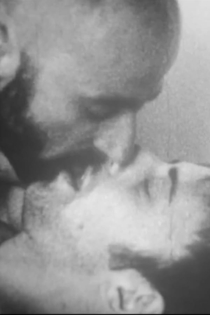
Xavier Baert
2021Extase
Xavier Baert
Two men making love. The question of the embrace (which encompasses the caress, the look, the kiss, the penetration, the speed of movement, the expression of ecstasy…) give to the film a scenario of examples of editing (disconnection, links, rhythm, interlaced films, alternate editing…). A sometimes figurative logic (make love, to be loving, to enjoy), choreographic (to caress, to interlace, to kiss, to lick, to penetrate), and cinematographic ( to link, to bring together, to move, to embrace…:to mount)
Extase

Fantôme
Xavier Baert
Eliichi Kimura
Xavier Baert works on the visual outline of the body. He creates cinematographic body states which according to the French filmmaker, only cinema can invent. Ghost plays on projection and light phenomenon, on the double exposure of a body on another. The narration which is essential through a slow temporal flood comes within a progression which plays on the working drawing and fading. A ‘ghostly’ fading as it is more a question of the appearance of a body without substance through shadow effects and light loops. The image cast in negative adds to this ethereal space the sensation of unreal space, which however, forms one body with the presence of this shadow in perpetual movement. Fantome reminds us that cinema’s main rights are ‘recording bodies.
Fantôme

Danseurs à la Gay Pride 2001
Xavier Baert
If it is films which reveal ‘the choreographic fatality of cinematographic intervention’(Dominique Paini) this one henceforth very much belongs-dance gestures, in slow motion, distorted, halted, impregnate the film procession in a commentary-magnificent-by its own unfolding (back and forth). In the tradition of the great Adebar (Peter Kubelka, 1957), Danseurs à la Gay Pride 2001 probe the origins of cinematographic movement from a photogrammatical treatment, based on the ecstatic effect that the repetition of a movement procures- hands, faces, hips- shown in slow motion.
Danseurs à la Gay Pride 2001

Bal de la Tournelle
Xavier Baert
A high angle shot of light, colours and rhythms in the darkness of a rave party. Freedom of Super 8 (main material of most of my films at this time), slow motion intensity (Hong-Kong cinema convinced me about the profoundness), a flash of a male body outline (colour metamorphosis on the outline of the dancer’s naked shoulder), developing dance.
Bal de la Tournelle

Empreinte
Xavier Baert
Cyril Accorsi
This birth of the human silhouette metonymically takes us back to the origins of cinema, to Marey or Muybridge’s pre-cinema. Baért with his model wanted to re-find the dancer Loie Fuller’s aerial movements such as one can see in Fire Dance (1901). This research for origins continues with the malleability of the ‘imprints’ of the dancer and the circulation of materials and lights.(…) Imprint plays, from the point of view of form, with the material, the identity, the hybridization between film and skin, material and light (…), towards the constitution of a new organism where skin and celluloid acquire an even esthetical status, a true melting pot of malleable images and thoughts.
Empreinte


